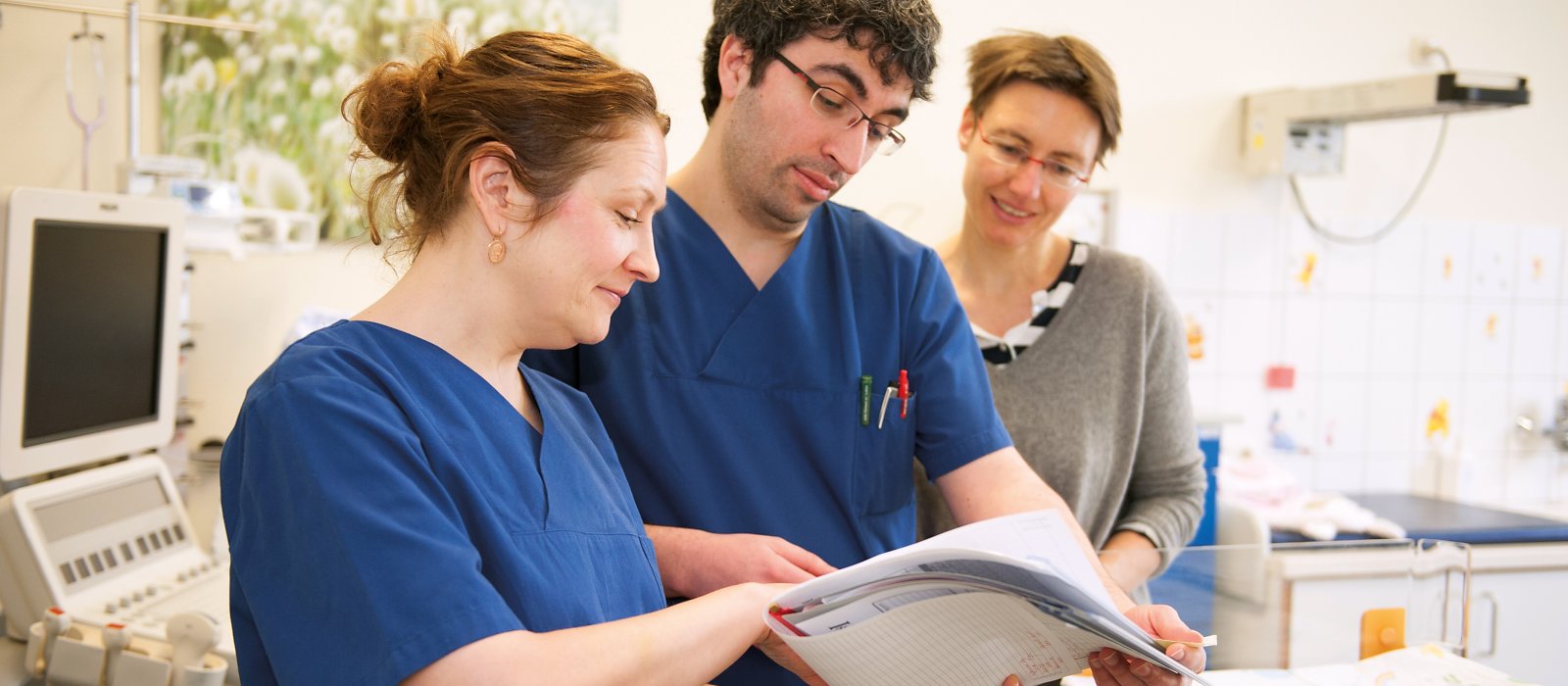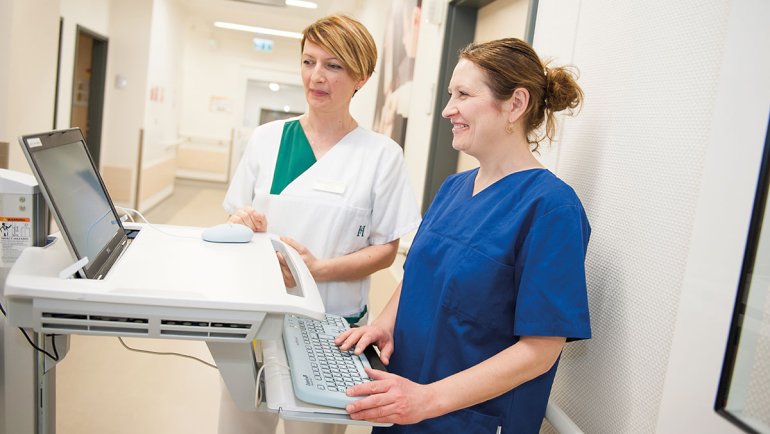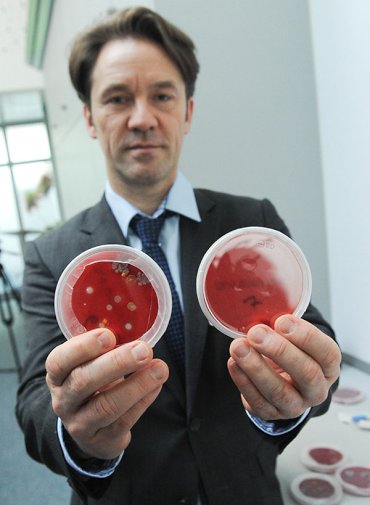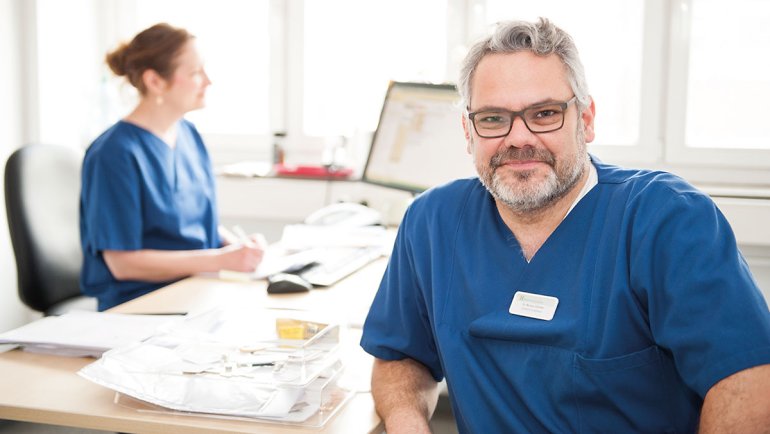

Hygiene in hospitals is essential for the survival of patients, and efforts made by hospitals to ensure high standards of hygiene are enormous. Yet cases of bacteria spreading between patients and hospital wards continue to occur, even in wealthy, technologically advanced countries.
(Published: July 2017)
For example at the HELIOS Hospital Duisburg, in western Germany: This maximum-care facility, a university teaching hospital with more than 1,000 beds and 24 specialist departments, was hit by a wave of infections caused by multiresistant bacteria. Mistakes had been made in hygiene management, plunging the hospital into a crisis. Since then, important lessons have been learned. This article illustrates how improvements have been made and rigorously implemented. Hygiene standards in the hospital are now at their highest level ever.
August 13, 2013, was a perfect summer Saturday in Duisburg, but at HELIOS Hospital Duisburg a storm was raging. “Alarm on spreading bacteria in hospital,” read one headline. Another warned readers of a “skyrocketing increase in MRSA infections” at the hospital. MRSA – methicillin-resistant bacteria – has been identified by the World Health Organization as one of the antibiotic-resistant “superbugs” that pose a huge threat to public health worldwide. The outbreak caused many people to lose confidence in the hospital. The number of patients dropped – and so did the employees’ morale.
An important element in the sustained success has been a regular dialogue between all involved staff.Today, less than four years later, HELIOS Hospital Duisburg has one of the best infection-prevention records in the HELIOS Group, which regularly makes its hygiene data public. For Dr. Holger Raphael, the hospital’s Managing Director since mid-2013, this gives cause for satisfaction but not complacency. “We managed to turn things around that time,” he says. “But preventing infection is a never-ending story, particularly in light of the increase worldwide in antibiotic resistance. Our first priority now is what it always has been: to keep reminding ourselves of what is at stake.”

The storm clouds that burst in 2013 were present before Fresenius Helios acquired the hospital in late 2011. Infections do not increase overnight – most are a result of inefficient organization, poor quality medical care or a lack of knowledge among employees. Further complicating matters, HELIOS Hospital Duisburg has several clinics spread across the city of 490,000 people, an industrial center at the intersection of the Rhine and Ruhr Rivers. This necessitates countless daily “patient transports” between the clinics, and can make it more difficult to share information.
“For a long time there was a lot of uncertainty about how to deal with multi-resistant pathogens,” explained Ankica Gagro, who is now Head Nurse in the Cardiology Department . “There were few uniform standards, so, over time, many departments established their own procedures.” The result was that standards varied from ward to ward, even though the conditions and pathogens were identical. Many employees lacked a channel for communication and access to information.
When the “germ scandal” hit, the integration of the hospital into the HELIOS Group was still incomplete. Improvements in hygiene management had not yet been fully implemented. When the bacteria appeared, the pace of change was accelerated in affected departments: Hospital management and Dr. Natalie Pausner, the new Senior Hospital Hygienist, analyzed and prioritized the problems. Renewed energy was put into carrying out long-established procedures more thoroughly.

“We immediately brought all employees working in areas with close patient contact into the review of the situation and improved our hygiene guidelines,” recalled Dr. Markus Schmitz, Chief Physician for Anesthesiology and the hospital’s Medical Director since early 2013. “The staff then received intensive training. From this point on, a bottle of disinfectant became standard equipment in the pocket of every physician and care employee.”
At the same time, acute problems were recognized and put onto the agenda more quickly. One example was reporting over-use of antibiotics, which can increase bacterial resistance. “That year we also began to extend antibiotic rounds, during which doctors review antibiotic use, to all departments, and to screen all patients for MRSA when they were admitted to hospital,” said Dr. Schmitz. Steps were taken to ensure laboratory results were obtained faster. A weekly internal conference was started where every death in the hospital was discussed with all involved medical personnel. This gave doctors clues on how to better treat similar cases in the future.
An important element in the sustained success on improving hygiene has been a regular dialogue between all involved medical and managerial staff. Doctors Pausner and Schmitz, for example, meet every four weeks and send a monthly report with the hospital’s latest infection data to hospital management and all chief physicians. Among measures launched on their initiative was the introduction in 2015 of short-sleeved shirts for doctors, to prevent transmission of bacteria that can cling to long sleeves.
HELIOS Hospital Duisburg has adopted many more measures to ensure that hygiene standards will continue their steady improvement. The hospital participates in data collection programs organized by a national center and operates an in-house data bank for pathogens, both of which help to pinpoint areas to implement or improve hygiene measures. All hospital wards are better targeting the placement of disinfectants. There is also a standard range of products and techniques for cleansing patients of bacteria. Every specialist department has doctors and nurses responsible for hygiene. An online training module for continuously updating hygiene training and practices has been launched.
“In addition,” said Dr. Pausner, “we flag patients with multiresistant pathogens much more visibly, both in their electronic file and also directly at their bed.” Doctors and their teams regularly update other employees via the intranet and, in acute cases, proceed promptly to the ward. Other hospital staff can make frequent use of the information and share it with colleagues, which helps maintain a focus on hygiene and infection prevention. Constant increased awareness of hygiene issues by hospital staff has probably been the most important and beneficial lesson to have come out of the difficult days of summer 2013, said Dr. Raphael.
Contact
Helios Kliniken GmbH
Friedrichstr. 136
10117 Berlin
Germany
T +49 30 521 321-0

